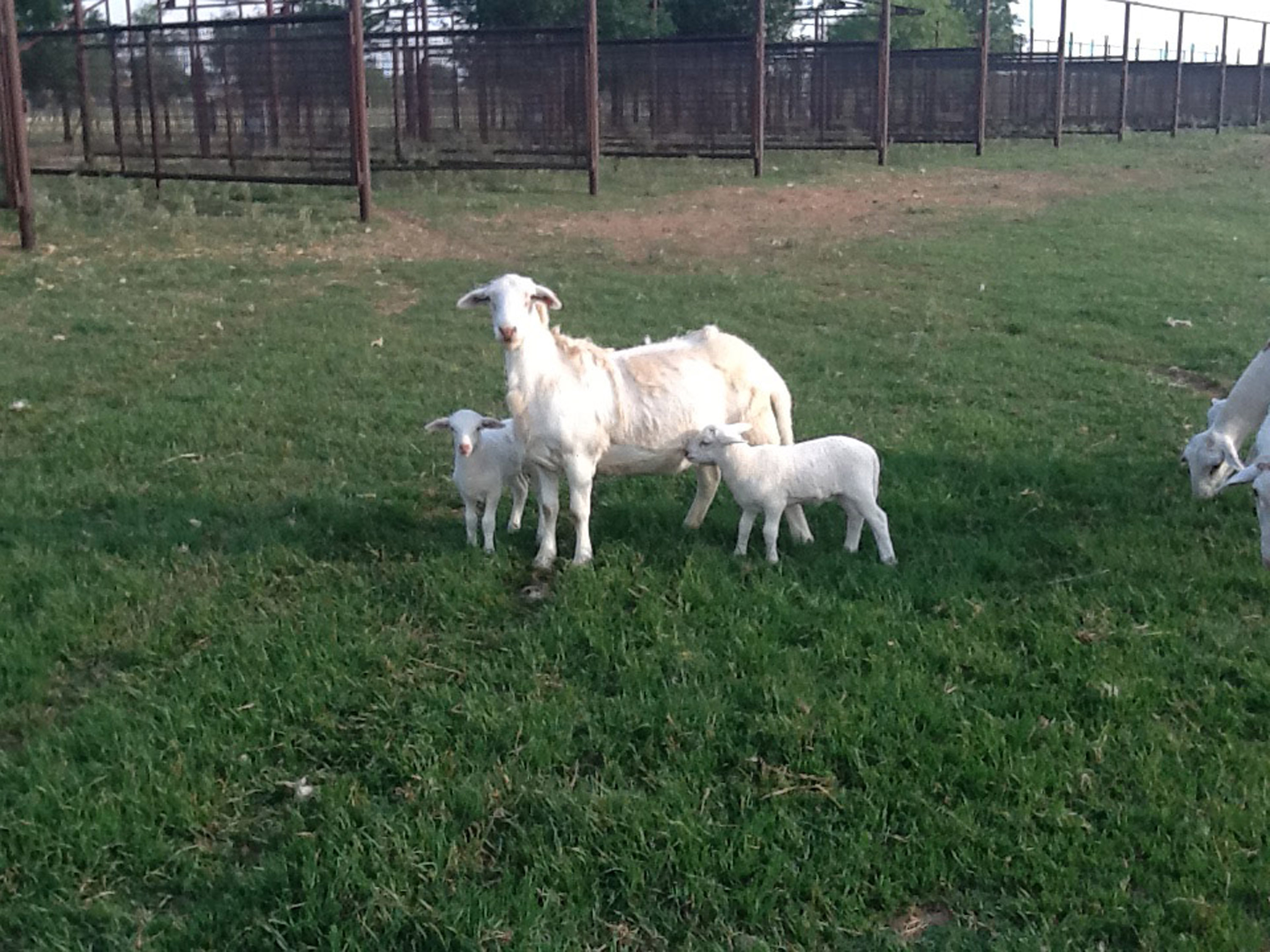Farm & Ranch
The Sheep Market isn’t half B-A-A-D

By Corsi Martin
When you think of livestock in the state of Texas, most people consider cattle before all else. Cattle most certainly bring the most income and occupy a larger market, but there are other forms of livestock that tend to get overlooked by some farmers and ranchers.
Being one of the first agriculturally domesticated animals, sheep are an extremely resourceful form of livestock for their wool, meat, and milk. Sheep farmers don’t just exist in the form of Irish Shepherds, believe it or not.
When compared to the price of cattle, sheep are much more cost efficient and have a gestation period of only 152 days, often times having twins. While the profit of sheep does not match what a single cow could bring, the turnover rate for sheep is considerably more rapid, thus, faster profit.
In fact, certain agricultural studies suggest that the sheep market could be a hidden gold mine for smaller ranchers in years to come.
Of course, if the value of wool were to go up, sheep would be in high demand all over the world, especially in countries where industrialization is scarce. Many people in the United States tend to think of sheep as being a main source for wool.
While wool or fleece will currently sell from $6 to $21 per pound depending on the quality of the coat (which will ultimately depend on the breed of the sheep), it is just one resource provided by sheep, and not the most valuable by long shot. Meat markets sell lamb meat by the hundreds of pounds and some restaurants even serve it as a delicacy. Although lamb is not the most widely consumed form of meat in the United States at the moment, places like the United Kingdoms, Australia, and many countries in the Middle East consume it daily.
To read more pick up a copy of the July 2017 NTFR issue. To subscribe call 940-872-5922.
Farm & Ranch
Acorn Toxicity

By Barry Whitworth, DVM, MPH
With the prolonged drought, most pastures in Oklahoma end up in poor condition. With the lack of available forage, animals may go in search of alternative foods.
If oak trees are in the pastures, acorns may be a favorite meal for some livestock in the fall. This may result in oak poisoning.
Oak leaves, twigs, buds, and acorns may be toxic to some animals when consumed.
To read more, pick up a copy of the November edition of North Texas Farm & Ranch magazine, available digitally and in print. To subscribe by mail, call 940-872-5922.

Farm & Ranch
Silver Bluestems

By: Tony Dean
There are a handful of grasses on North Texas grazing lands ranchers need to know, not because they are highly desirable, but rather because they are not of much value. I call them “decom” plants, which is am acronym for “Don’t Ever Count On Me.” Silver bluestem is a “decom” grass.
Silver bluestem is a perennial which grows in all areas of Texas. It can survive in almost all soil types, and in full sun conditions or in semi shade. It grows up to three feet tall and is easily recognized with the presence of the white fuzzy seed head. Also, one of the identifying characteristics of Silver bluestem is a bend in the stems at each node, causing the plants to take on a rounded shape as they mature.
To read more, pick up a copy of the November edition of North Texas Farm & Ranch magazine, available digitally and in print. To subscribe by mail, call 940-872-5922.

Farm & Ranch
Meanwhile Back At The Ranch

By: Rayford Pullen
Fall is here which means winter is closing in on us and before we officially get into winter, we need to make sure our factories are either producing or will be producing in a few months.
We have been pregnancy testing our cows this fall and if they are not bred or nursing a calf, we are bidding them adios. With annual costs somewhere between $900.00 and $1,000.00 per cow, those cows not producing a live weaned calf are costing us quite a bit.
To read more, pick up a copy of the November edition of North Texas Farm & Ranch magazine, available digitally and in print. To subscribe by mail, call 940-872-5922.
-

 Country Lifestyles2 years ago
Country Lifestyles2 years agoScott & Stacey Schumacher: A Growth Mindset
-

 Country Lifestyles8 years ago
Country Lifestyles8 years agoStyle Your Profile – What your style cowboy hat says about you and new trends in 2017
-

 HOME8 years ago
HOME8 years agoGrazing North Texas – Wilman Lovegrass
-

 Equine1 year ago
Equine1 year agoThe Will to Win
-

 Country Lifestyles5 years ago
Country Lifestyles5 years agoAmber Crawford, Breakaway Roper
-

 Outdoor9 years ago
Outdoor9 years agoButtercup or Primrose?
-

 Country Lifestyles8 years ago
Country Lifestyles8 years agoJune 2016 Profile – The man behind the mic: Bob Tallman
-

 Country Lifestyles8 years ago
Country Lifestyles8 years agoDecember 2016 Profile, Rusty Riddle – The Riddle Way




